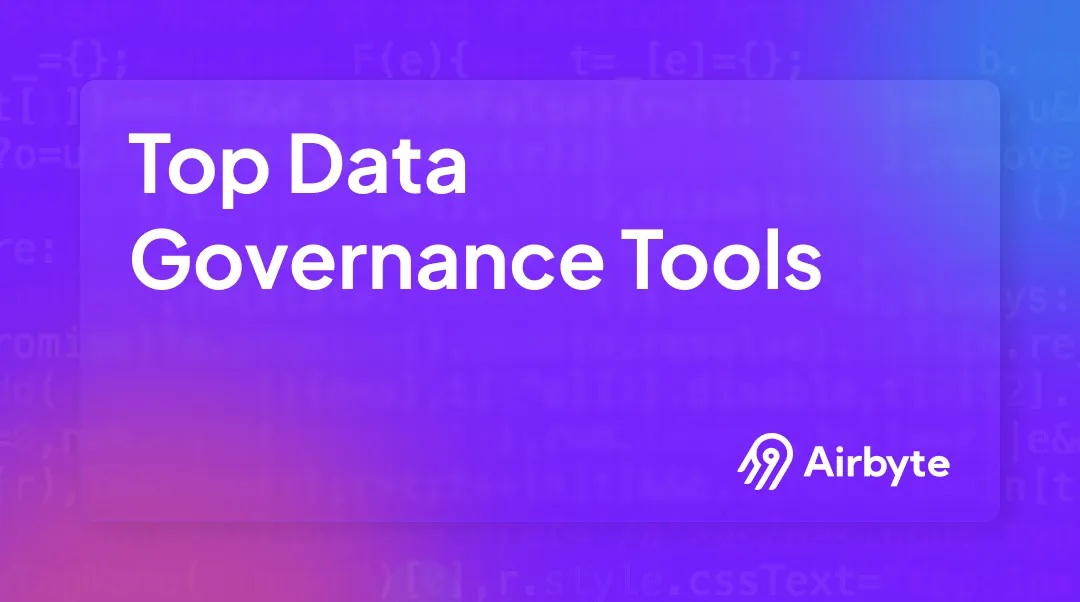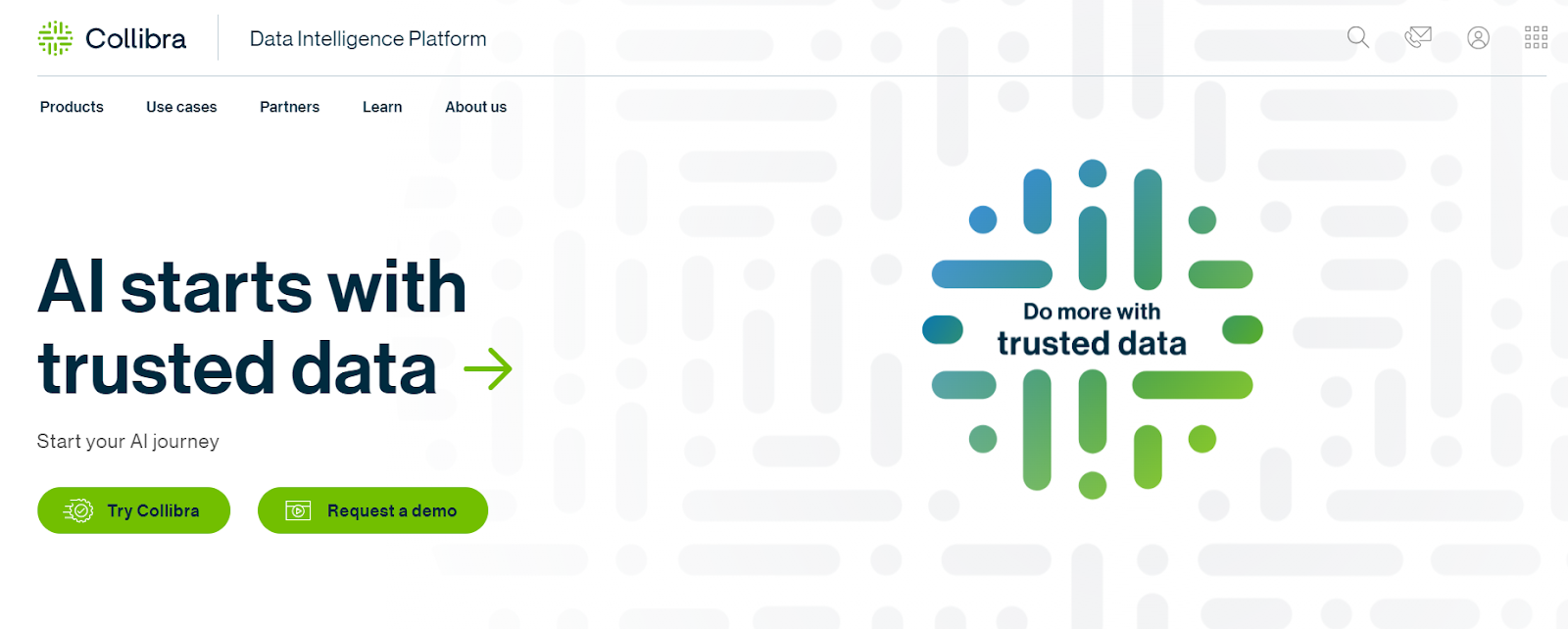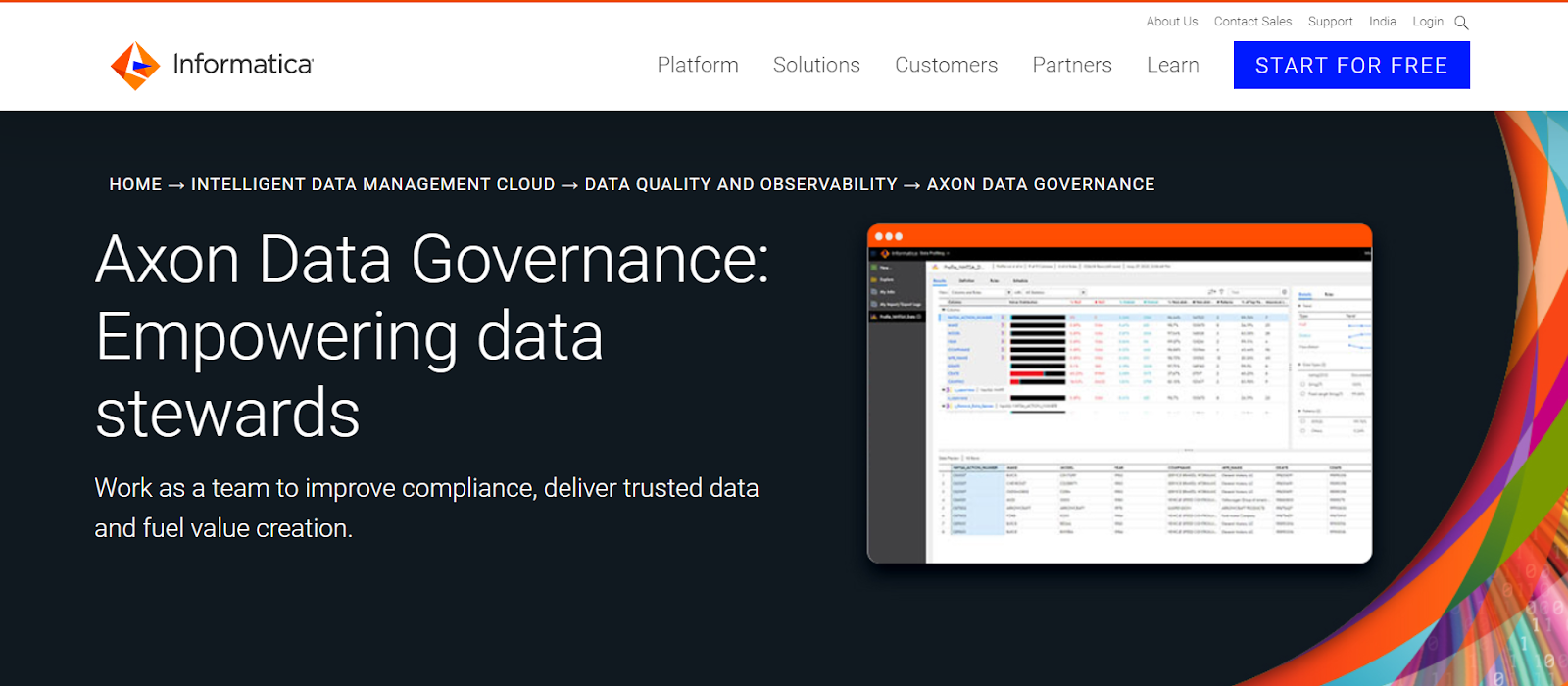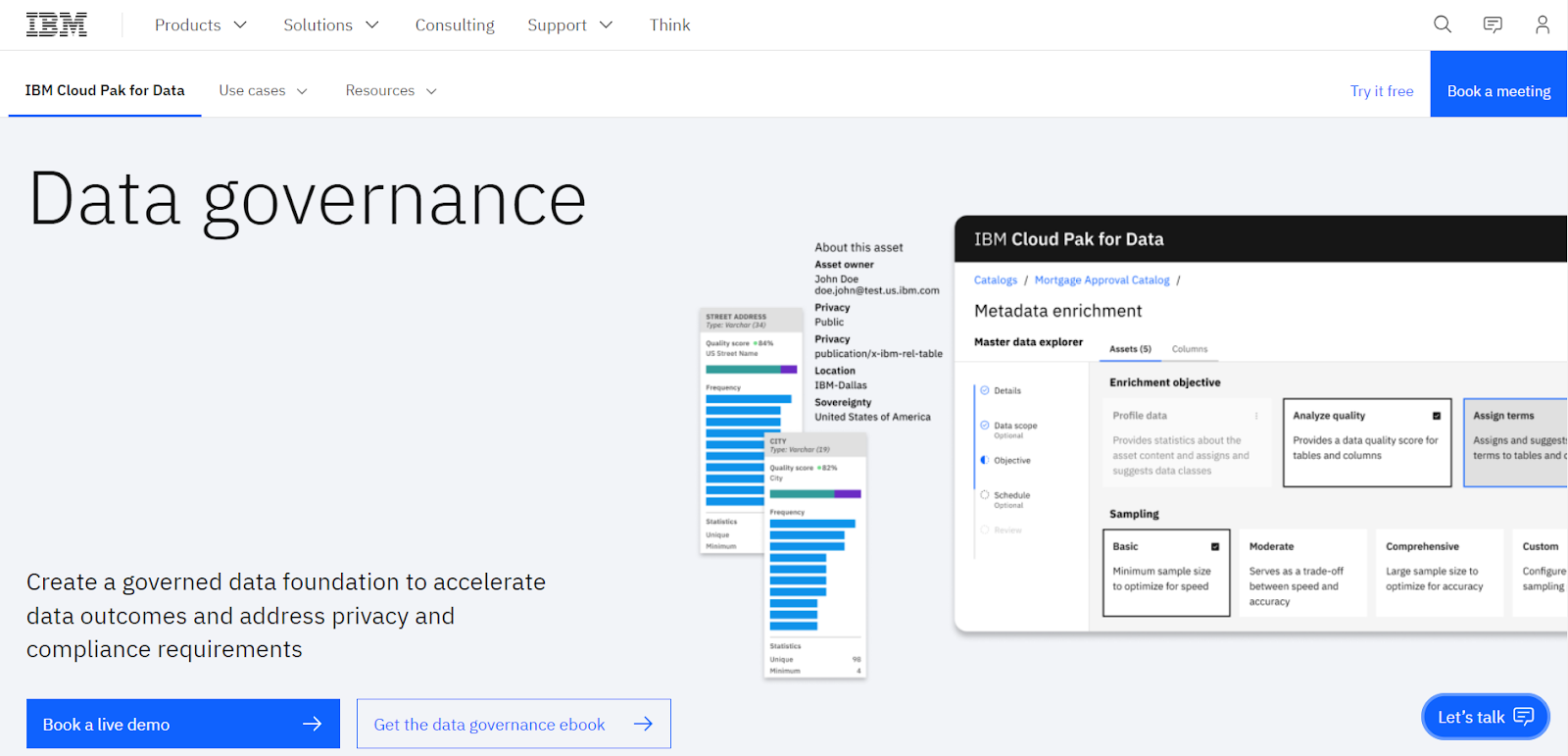5 Best Data Governance Tools Compared [2026]
Summarize this article with:


Data is present everywhere in the form of records such as sales, marketing, transactions, reports, and surveys, including enterprise systems like SAP that store critical business data. These data are gathered from multiple sources, including crowdsourcing initiatives that leverage collective input, and put into a centralized repository for improved data analysis. However, before applying data science techniques to analyze information, it is crucial to ascertain the accuracy and consistency of datasets as it can lead to financial risks, opportunity loss, and legal problems. This is where the role of data governance takes center stage. It ensures the dataset is authentic, secure, and meets the industry standards and policies.
In this article, you will develop a deeper understanding of data governance concepts and their major benefits in driving organizational success. You will also learn about the top five data governance tools that you can use for maintaining data integrity and security.
What is Data Governance?
Data governance is the comprehensive set of policies, practices, and tools for overseeing the data assets of an organization at every phase of its lifecycle, with robust metadata management at its core. It helps you align data requirements with your business goals, enhancing data management, quality, visibility, security, and compliance across the entire organization. By implementing an effective data governance strategy, you can gain a significant competitive advantage through swift access to data for data-backed decision-making, safeguarding it from unauthorized access, and ensuring regulatory compliance.
Top 5 Data Governance Tools
Secoda

Secoda is a modern data management and discovery platform that simplifies how organizations understand, govern, and collaborate on their data. Designed for data teams and business users alike, Secoda combines data cataloging, lineage tracking, documentation, and governance into a single intuitive workspace. Its goal is to make data knowledge accessible and actionable across the organization by automating data documentation, context creation, and governance processes.
Key Benefits of Using Secoda
- Unified Data Discovery
Secoda centralizes all data assets—such as tables, dashboards, and metrics—into one searchable platform. Its intuitive interface and AI-assisted search allow users to find the right data quickly, eliminating data silos and improving overall accessibility. This unified catalog helps teams make data-driven decisions faster and more confidently. - Automated Documentation
With Secoda’s automation features, data documentation becomes effortless. The platform automatically generates metadata, lineage, and descriptions for datasets and dashboards. This automation reduces manual upkeep while maintaining a consistent and accurate understanding of how data flows and is used within the organization. - Data Lineage and Transparency
Secoda provides a visual map of data lineage, showing how data moves from source systems to end dashboards or models. This transparency enables better debugging, impact analysis, and compliance reporting by allowing teams to trace data transformations and dependencies easily.
Collibra

Collibra is an enterprise-focused data governance platform that encourages data stewardship and offers automated solutions for governance and management. As an integral part of the Data Intelligence Cloud platform, Collibra Data Governance seeks to help you provide your end users with reliable data through comprehensive standardization of data formats, processes, and terminology across the organization. Their governance solution can assist you in standardizing regulatory processes and workflows, establishing a shared language for datasets, and facilitating the collection and analysis of relevant data.
Key benefits of using Collibra
- Data Security: With Collibra, you can securely perform data profiling and quality analysis on your organization's edge server. Its security features ensure that your data never leaves the system and is managed and monitored accordingly. For instance, you can employ SSO to control user access to your dataset.
- Data Stewardship: You can effectively organize your day-to-day tasks by using the Collibra Data Stewardship. It allows you to track and maintain your own space in the company's data governance ecosystem. This space gives you an overview of the responsibilities inside the data governance structure.
- Data Privacy: The data privacy feature enables you to recognize and protect sensitive personal and business-related information using automatic data classification.
- Industry Certifications: Collibra provides a managed solution to comply with privacy regulations and adheres to several data protection laws, such as CCPA and GDPR. This gives you the authority to protect your data from external threats and vulnerabilities.
Axon Data Governance (Informatica)

Axon Data Governance, Informatica’s product suite, is a powerful data governance tool that enables your organization to deliver reliable data. It leverages AI and machine learning capabilities to automate data discovery, quality, and consistency, while providing advanced data mapping features to establish clear relationships between different data sources and targets. Beyond these features, it also allows you to identify gaps in datasets, establish connections between data elements, and discover shared data.
Benefits of using Axon Data Governance
- Data Lineage: Informatica allows you to leverage automated data lineage tracing. It monitors data flow from high-level system views to small-scale column-level details. This comprehensive approach enables you to perform a thorough analysis.
- Data Stewardship: Axon data governance facilitates data stewardship by designating specific responsibilities to data stewards, expediting the process of resolving data issues, and managing data quality.
- Data Democratization: To share and analyze data across the organization, you can create pre-approved sets of governed data with enhanced accessibility features, ensuring all authorized users can effectively access and utilize the information they need
- Compliance Audit Readiness: It enables you to gain control over your data by adhering to regulations, such as HIPAA, CCPA, GDPR, and BCBS 239.
Talend Data Fabric

Talend Data Fabric is a robust platform that provides data quality, management, and governance solutions. It employs machine learning capabilities to enrich data profiling by identifying quality issues, exploring hidden patterns, and spotting anomalies in the dataset. Beyond these capabilities, it also empowers you to organize, transform, and synchronize data, thus maintaining data integrity.
Benefits of using Talend Data Fabric
- Security Certifications: Talend is committed to preserving data confidentiality and integrity by adhering to several industry standards. These compliances include SOC 2 Type 2, HIPAA, Cyber Essentials Plus, GDPR, ISO 27701, and CSA STAR.
- Data Catalog: With its data cataloging feature, you have a single, safe point of control over your data, with the ability to map and visualize relationships between different data elements. You can use it to link, enhance, profile, and organize all of your metadata. With the help of machine learning technologies, you can automatically document up to 80% of the information related to the data and maintain its accuracy.
- Data Inventory: Its data inventory solution enables you to collaborate with your teammates to identify silos in the data, thus improving the quality of data assets. This makes data quality and curation a systematic process, ensuring data reliability.
- Data Stewardship: Talend data stewardship promotes collaboration with a team-based approach that emphasizes usability, simplifying the process of defining goals and tracking data progress across the organization. You can organize, validate, and reconcile the data and assign tasks to others accordingly.
IBM Data Governance

IBM Cloud Pak for Data is a cloud-native platform that facilitates client data management, AI governance, data integration, quality, and privacy actions, with support for big data processing through Apache Hadoop integration. The application has AI-driven data discovery, profiling, and categorization features to address data quality issues and ensure accuracy. Apart from resolving quality issues, you can also conduct automated privacy and risk assessments on your dataset to identify and mitigate any potential risks.
Benefits of using IBM Data governance tool
- Data Catalog: In IBM Cloud Pak, a data catalog serves as a consolidated repository for metadata and data assets, making it easier for you to discover, comprehend, and efficiently work on data resources. Cataloging data improves security by providing an extensive overview of data history, usage, and connections.
- Industry Practices: IBM certifications adhere to FIPS, GDPR, and HIPAA laws. It offers granular control over who has access to or can interact with your data, ensuring absolute confidentiality at all times.
- Data Security: It provides robust security features such as encryption, access controls, and data masking to safeguard datasets.
- Flexible Deployment: IBM Cloud Pak for Data can be deployed on-premise, in a cloud, or a hybrid environment according to your business needs to protect sensitive data from unauthorized access.
💡Suggested Read: Data Profiling Tools
Optimize Data Governance Tools With Airbyte

Before incorporating security features, it is essential to integrate data from multiple sources like databases, flat files, and SaaS applications into a data warehouse. This is where Airbyte can help you streamline the process of centralizing data. It follows a modern ELT approach with sophisticated data transformation (computing) capabilities that allows you to seamlessly collect data from disparate sources, perform complex computational transformations, and load it into a centralized repository.
You can leverage its extensive library of 550+ pre-built connectors to automate data pipelines within minutes. In addition, you can utilize Airbyte’s AI Assistant to build custom connectors using Connector Builder and speed up the development process significantly.
Airbyte is a reliable platform that facilitates centralized data transfer, simplifies data management, and ensures data quality and integrity across diverse sources and destinations. By integrating Airbyte into your data governance frameworks, you can automate replication processes, streamline integration, and keep a unified view of all of your data assets. This allows you to gain greater visibility and control over your datasets.
Here are some of the key benefits of using Airbyte:
- Data Security: Airbyte employs encryption methods like SSL or HTTPS to safeguard data in transit and at rest. It also provides access controls and authentication mechanisms to ensure that only authorized users can access data, thereby enhancing overall data governance.
- Security Certifications: Airbyte Cloud's ISO 27001 and SOC 2 Type II certifications indicate its dedication to best security practices. In addition, AES-256-bit encryption is also used to encrypt customer metadata at rest, while TLS (Transport Layer Security) is used to encrypt data in transit.
- Documentation and Logging: Airbyte maintains a record of all platform changes, offering an audit trail for compliance and historical analysis. This helps provide data authenticity and traceability.
- Record Change History: This feature helps you enhance the reliability and resilience of your data movement. It automatically modifies problematic rows in transit, keeping your data syncs uninterrupted, and maintains transparency by informing you of the changes made.
- Very Large CDC Syncs: The WASS (WAL Acquisition Synchronization System) algorithm simulates manual data synchronization. It periodically switches between performing an initial snapshot and reading the transaction log to prevent log buildup and sync databases of any size. This keeps your data up-to-date, improving its trustworthiness.
- Self-Managed Enterprise Edition: To future-proof your growing data volumes, Airbyte has announced the general availability of the Self-Managed Enterprise version. With this, you have the flexibility to scale the data ingestion capabilities and enable your multi-tenant data mesh or data fabric architectures. You can also operate the Enterprise edition in air-gapped environments using the Terraform Provider, user interface, and API.
Importance of Data Governance
Data management is vital, but it can be vulnerable to breaches and leaks. However, data governance helps address these issues by establishing clear roles, procedures, and standards for efficient data handling. This minimizes risk and ensures data security. Some of the key benefits of implementing data governance features include:
- Improve Data Accuracy: Data governance sets guidelines, business rules, and procedures that ensure that information is accurate, comprehensive, and consistent with organizational standards. This ascertains fewer errors, higher-quality data, and more confidence in data-based decisions.
- Ensure Regulatory Compliance: Implementing data governance will enable you to adhere to legal standards such as the California Consumer Privacy Act (CCPA) and the General Data Protection Regulation (GDPR), including strict data retention policies that determine how long different types of data should be stored. Incorporating these compliances will allow you to gain control over your data and possess the right to access, modify, or delete the data.
- Increased Operational Efficiency: Effective data governance establishes a single source of truth by eliminating data silos. This results in higher productivity, lower expenses, and enhanced security management across the dataset.
Here are the top five data governance tools that you can employ for effective data security and management:
Final Word
This article has comprehensively covered data governance and highlighted its key benefits. You also reviewed the top five data governance tools for improved security and compliance. Each tool has been designed to provide different security features and adhere to multiple data privacy rules. You can employ them according to your business needs, as they are designed to ensure data integrity and confidentiality.
What should you do next?
Hope you enjoyed the reading. Here are the 3 ways we can help you in your data journey:



Frequently Asked Questions
What is ETL?
ETL, an acronym for Extract, Transform, Load, is a vital data integration process. It involves extracting data from diverse sources, transforming it into a usable format, and loading it into a database, data warehouse or data lake. This process enables meaningful data analysis, enhancing business intelligence.
This can be done by building a data pipeline manually, usually a Python script (you can leverage a tool as Apache Airflow for this). This process can take more than a full week of development. Or it can be done in minutes on Airbyte in three easy steps: set it up as a source, choose a destination among 50 available off the shelf, and define which data you want to transfer and how frequently.
The most prominent ETL tools to extract data include: Airbyte, Fivetran, StitchData, Matillion, and Talend Data Integration. These ETL and ELT tools help in extracting data from various sources (APIs, databases, and more), transforming it efficiently, and loading it into a database, data warehouse or data lake, enhancing data management capabilities.
What is ELT?
ELT, standing for Extract, Load, Transform, is a modern take on the traditional ETL data integration process. In ELT, data is first extracted from various sources, loaded directly into a data warehouse, and then transformed. This approach enhances data processing speed, analytical flexibility and autonomy.
Difference between ETL and ELT?
ETL and ELT are critical data integration strategies with key differences. ETL (Extract, Transform, Load) transforms data before loading, ideal for structured data. In contrast, ELT (Extract, Load, Transform) loads data before transformation, perfect for processing large, diverse data sets in modern data warehouses. ELT is becoming the new standard as it offers a lot more flexibility and autonomy to data analysts.
